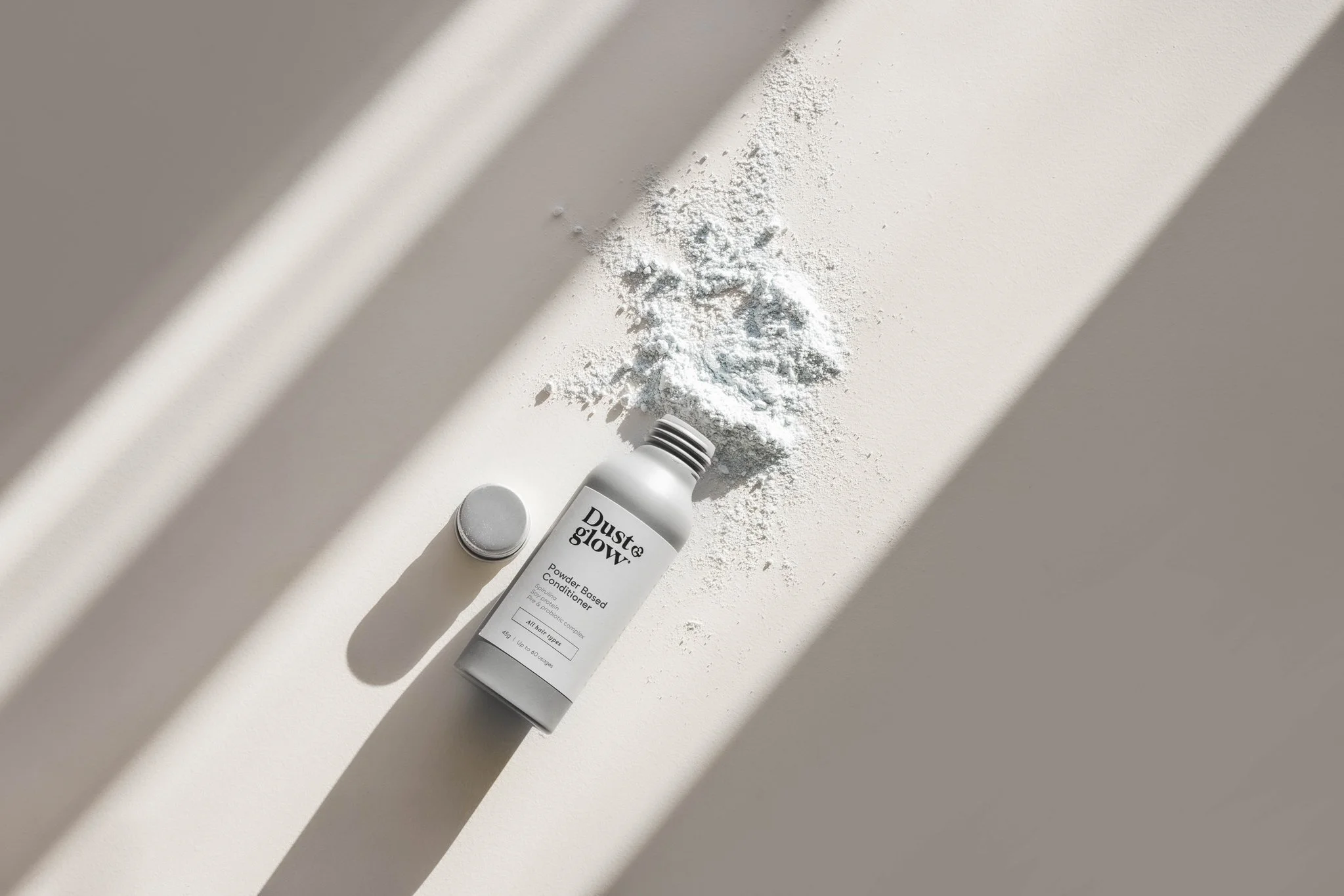Business Q+A with Dust and Glow
Business Q + A:
Tell us about how and why Dust and Glow came about
For over 10 years I’ve worked in the beauty industry, and as time went on, I became more and more aware of how wasteful the cosmetics industry is.
The eco footprint of the beauty industry is big! Not only is pouring artificial ingredients down the drain harmful for our environment – so are the gazillions of plastic containers used to store them or the amount of water wasted in the process.
If you look at a label carefully, you will soon find an endless list of unknown ingredients. Most products are composed of a blend of 80-95% water, preservatives and synthetics. The inspiration for Dust & Glow, came to me the moment I realized the beauty industry needed a shake-up. Driven by innovation, I wanted to simplify and rethink the way we use products. Because in beauty, less can be more.
I challenged myself to create a brand with a difference, where every single ingredient has a purpose and a benefit for the skin. Products that work! And really help your skin and hair glow, while reducing the impact on the environment.
What was the hardest part about making sure it’s sustainable and you’re not falling into the category of green washing.
I feel this was the hardest, finding clear facts and recommendations on packaging, materials…was no easy task. Experts don’t all agree on packaging materials for example. The most important for me was to be transparent, explain the choices I made along the way and also keep looking for ways to improve.
For example the research for the packaging took over a year. I trialed and investigated so many options and at time it got really confusing and overwhelming. I knew what I didn’t want (Plastic, Single use, over packaged …) but finding the ‘’perfect’’ packaging was a struggle . On the quest to being a low waste, conscious brand I teamed up with the experts at Circularity NZ to help validate a circular system for the aluminium packaging
Here is why I chose Aluminium for the brand:
Our bottles are designed to be re-used and refilled.
Recycling aluminium requires only 5% of the energy and produces only 5% of the CO2 emissions as compared with primary production. It is also the most cost-effective material to recycle.
✓Endlessly recyclable unlike plastic
✓Lightweight: to reduce our carbon footprint vs glass
✓Refillable
✓Made to last - we say NO to single use
✓Compact & easy to travel with: literally fits in your hand
✓Shower friendly: no risk of breakage vs. glass and they dont rust!
✓ Food grade
On the cons though, most aluminium isn’t sourced in NZ but comes from overseas. That’s why I am trying to implement a circular model where you can 1) Send me back the bottles 2) I get them cleaned and back into circulation
For the labels
In an ideal world, I would have no label on our bottles but a direct screen printing. But as we are starting up that wasn't an option so I looked at all label options available.
Our labels look like a normal paper label but it is not! It is made of natural limestone waste off-cuts and recycled resin in a process that uses solar energy and generates zero waste. It has a low CO2 emission profile It beneficially reuses a waste stream. Its manufacture does not pollute waterways and rivers with toxic effluent. Its manufacture uses relatively little energy utilising solar power.
It is estimated that the production of 1 ton of RMP compared with pulp paper:
✓Low carbon emission
✓7480 gallons of fresh water saved reduction of CO2 release
✓19.05 Kg water borne waste not produced
✓107.05 Kg atmospheric emissions eliminated
✓6 million BTU's energy not consumed
✓20 trees not cut down
https://www.stonepaper.co.nz/about-rockstock/environmental-attributes
What tips would you give to somebody who wants to start an eco business but has no idea where to start
· Find your why.
· Do some research & ask for some expert help if you need some
· Clearly define your key usp and how you will differentiate yourself from everyone else
· Create a plan, it doesn’t have to be 10 pages long, and how you will finance & support your business
· Have a good support system
· And believe in your dreams
What is the most challenging part of starting your own business?
A year ago, I kind of already started on the entrepreneur journey as I set myself up as a Marketing consultant (still freelance every now and then) . I think the biggest fear is letting go and starting something new & unknown.
For Dust & Glow, the most challenging part initially was to convinced manufacturing partners that waterless products in powder were a thing & finding natural & effective ingredients in a powder form As this is a new innovative form of beauty & personal care, it is unknown territory for most people. It took a lot of convincing, calling, emailing and negotiating to get it across the line. The 2ndbiggest challenge is getting the word out there on a limited budget 😉. And the 3rdone, would be time & focus.
What do you want from the future of dust & glow?
2.2 billion people around the world still lack safely managed drinking water, including 785 million without basic drinking water.
That is a lot of water being shipped around the world and stored unnecessarily when there is global water crisis!
We are donating 1% of our sales to give clean water access to those who need it the most. The goal is to ditch the plastic & water waste, re-imagine beauty & personal care products (a few more products will be launching soon) so we can help as many people as we can along the way.


















